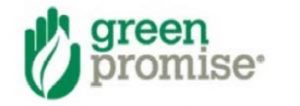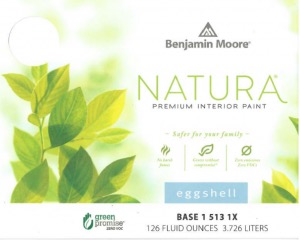By D. John Hendrickson
Marketers interested in the regulation of “green” claims in the home paint category will want to take notice of the Federal Trade Commission’s proposed settlement this week with four paint companies who were alleged to have made deceptive claims that their products were emission-free or contained zero volatile organic compounds (VOCs). But all marketers should take note of the additional settlement terms for two of the companies, who were alleged to have deceptively touted laudatory “seals” in their product promotional materials.
The terms of settlement with Benjamin Moore & Co., Inc. ICP Construction, Inc., YOLO Colorhouse, LLC and Imperial Paints, LLC would bar the companies from making unqualified emission-free and VOC-free claims in the future unless, at all times during application of the paints and after, the content levels of the paints and the emission levels from the paints were actually zero, or the emissions were at “trace levels.”
But, in addition, as to Benjamin Moore and ICP Construction only, these companies would be prohibited from misrepresenting the true nature of third-party certifications contained in their product advertisements and failing to disclose any “material connection” with the endorsers.
By way of example, Benjamin Moore’s advertising for its Natura line of interior paint included the following seal:

And it was used in the following manner:

But, according to the Commission, the company failed to disclose at least one very important fact – that Benjamin Moore had awarded the seal to its own products. Oops. The same charges were made by the Commission against ICP Construction, too.
While the companies do not admit any wrongdoing by settling with the FTC, the Commission’s inclusion of these additional prohibitions in their settlements serves as a not-so-gentle reminder that the FTC’s Guides Concerning the Use of Endorsements and Testimonials in Advertising remain a relevant tool for understanding the Commission’s perspective on the proper use of endorsements.
Indeed, the concept of “material connection” is expressly referenced in Section 255.5 of the Guides, which provides that, “When there exists a connection between the endorser and the seller of the advertised product that might materially affect the weight or credibility of the endorsement (i.e., the connection is not reasonably expected by the audience), such connection must be fully disclosed.” Obviously, use of a seal or other indicia of certification without disclosure that the marketer itself awarded the accolade to its own product would constitute a deceptive act or practice under Section 5(a) of the FTC Act.
And the “back story” on material connection can be found in Section 255.4 of the Guides and its observation that an organization’s endorsement is viewed as “generally free of the sort of subjective factors that vary from individual to individual.” The language in this section goes on to provide that, “an organization’s endorsement must be reached by a process sufficient to ensure that the endorsement fairly reflects the collective judgment of the organization.”
With this emphasis on objectivity and impartiality in endorsements, any use of a purported endorsement – including a “seal” as above –in a manner that conveys an endorsement of the product by an impartial third-party organization when, in fact, no such third party is involved, would be a deceptive act or practice under Section 5(a).
Granted – the facts are not always so black and white. For instance, when does use of a distinctive design mark for branding purposes cross the line and become a false representation of certification or other endorsement? We’ll leave that question for another blog entry, but a key take-away from the above cases is to be aware that the third-party endorsement issue exists, and that each seal, certification, or other indicia of endorsement should be analyzed for compliance with the Guides. And, where there is any doubt, spell it out. After all, if a company has its own program for rating its products, transparency in explaining the process to consumers may buy more credibility in the end than the impressive “seal” by itself.
Legal disclaimer: This article is not intended to constitute legal advice or to create an attorney-client relationship. We trust you knew this anyway.